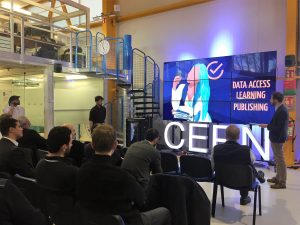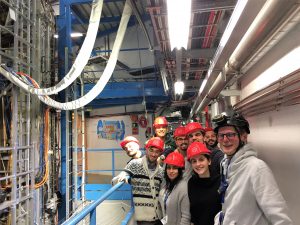Data, human needs and ads: our experience at CERN to define an inclusive digital advertising model.
Today people are overwhelmed by intrusive and non-relevant advertisements. According to some recent researches, each user sees, on average, more than 300 ads every day and 30% of users have opted for ad blockers to fix the problem. This situation negatively impacts on the overall perception of the digital advertising industry and its performance as well. At Instal we are continually working to find a solution to deliver only relevant content and customized messages to our users and help brands and companies to communicate to their clients (or potential ones).
 That’s why we decided to engage CERN (European Organization for Nuclear Research), using innovation and data to make digital advertising more consistent with people’s needs and wants. With this purpose, we formed a task force along with researchers from CERN and some students of University of Modena and Ferrara, selected to take part to CBI (Challenge Based Innovation Course), a project course where multidisciplinary student teams and their instructors collaborate with researchers to discover novel solutions for the future of humankind.
That’s why we decided to engage CERN (European Organization for Nuclear Research), using innovation and data to make digital advertising more consistent with people’s needs and wants. With this purpose, we formed a task force along with researchers from CERN and some students of University of Modena and Ferrara, selected to take part to CBI (Challenge Based Innovation Course), a project course where multidisciplinary student teams and their instructors collaborate with researchers to discover novel solutions for the future of humankind. 
The primary goal of this task force has been to deepen understanding of the ways data can be collected, analyzed, combined and activated, by using ML and AI technologies, to predict users’ preferences and behaviors, to serve them only relevant ads. During the entire project’s length, we sat together with CERN’s researchers and technology experts to share expertise, experiences, knowledge and point of views: we discussed the strengths and threats of our project while breathing innovation and technology inside CERN laboratories in Geneva, Switzerland. After months of hard work and meeting, the final prototype was presented at Cern, in Geneva, last January.
 This system has been then integrated with our brand new product, recently rolled out on the Italian market. This product, currently known as Instal’s Premium Solution, determines a win-win situation for both users and marketers. Indeed, our proprietary algorithms allow to realize a predictive users’ targeting based on a lookAlike modelling: by looking at their interests, the apps they have installed, the action they perform inside apps and the places they visit, we now allow advertisers to target users on their likelihood to convert, maximizing performances and reducing costs. Ads will be focusing more on quality rather than on quantity, improving user experience and delivering quality contents, determining a brand new way of looking at digital advertising: from something intrusive to something inclusive and relevant.
This system has been then integrated with our brand new product, recently rolled out on the Italian market. This product, currently known as Instal’s Premium Solution, determines a win-win situation for both users and marketers. Indeed, our proprietary algorithms allow to realize a predictive users’ targeting based on a lookAlike modelling: by looking at their interests, the apps they have installed, the action they perform inside apps and the places they visit, we now allow advertisers to target users on their likelihood to convert, maximizing performances and reducing costs. Ads will be focusing more on quality rather than on quantity, improving user experience and delivering quality contents, determining a brand new way of looking at digital advertising: from something intrusive to something inclusive and relevant.


